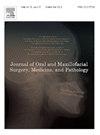Combination treatment with hyaluronic acid synthesis and Bcl-2 inhibitors induces senolytic elimination of oral squamous cell carcinoma cells in vitro
IF 0.4
Q4 DENTISTRY, ORAL SURGERY & MEDICINE
Journal of Oral and Maxillofacial Surgery Medicine and Pathology
Pub Date : 2024-09-10
DOI:10.1016/j.ajoms.2024.09.003
引用次数: 0
Abstract
Objective
Hyaluronic acid (HA) is a major glycosaminoglycan in the extracellular matrix and plays a vital role in cancer progression. HA interacts with cell membrane receptors, such as receptor for HA-mediated motility (RHAMM), to regulate the cell cycle and cell division. 4-Methylumbelliferone (4-MU) is a well-known HA synthesis inhibitor and a promising cancer therapy alternative. 4-MU is a coumarin derivative with no obvious side effects and has been studied in several cancers. However, little is known about its use in oral squamous cell carcinoma (OSCC). In this study, we evaluated the antitumor effects of 4-MU on OSCC cells.
Methods
The effects of 4-MU on HAS gene and HA-related protein expression were evaluated with RT-qPCR and Western blotting. The effects on HA secretion was confirmed by ELISA. The effects on cell proliferation were confirmed by MTS assay. Trypan blue exclusion assay was used for cell viability assay. Cell cycle analysis, cell-clock cell cycle assay, and apoptosis assay were used to determine the effects on cell cycle and apoptosis. SA-β-gal staining was used to evaluate senescence.
Results
4-MU induced senescence change in OSCC cells by overexpression of the anti-apoptotic protein Bcl-2 and markedly suppressed their proliferation. Furthermore, following administration of Bcl-2 inhibitor, ABT-263 known as a senescent cell eliminator can specifically induce apoptosis and eliminate the senescent OSCC cells.
Conclusions
These findings highlight the potential use of 4-MU in OSCC chemotherapy as a senescence-inducing agent that not only potently suppresses OSCC cell proliferation but also enhances the efficacy of Bcl-2 inhibitor.
求助全文
约1分钟内获得全文
求助全文
来源期刊

Journal of Oral and Maxillofacial Surgery Medicine and Pathology
DENTISTRY, ORAL SURGERY & MEDICINE-
CiteScore
0.80
自引率
0.00%
发文量
129
审稿时长
83 days
 求助内容:
求助内容: 应助结果提醒方式:
应助结果提醒方式:


